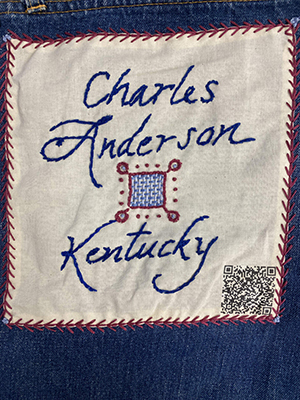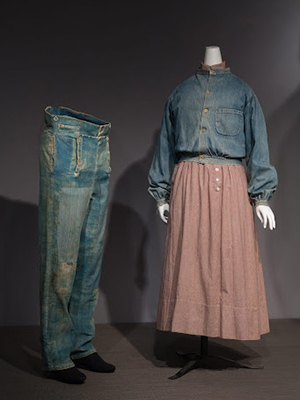Charles Anderson
“I was born in Bloomfield, Kentucky. My parents had the same owners. Mary and Elgin Anderson were their names. They were owned by Isaac Stone. Weaving was a thing the women prided in doing- being a fast weaver or a fine hand at weaving. They wove pretty coverlets for the beds. Once a year we got dressed up. We got shirts, a suit, pants and shoes, and what else we needed to wear. We didn’t have fine clothes.” – Charles Anderson
 Giftbelle Lomotey ’25
Giftbelle Lomotey ’25
Many cultures that have cultivated indigo have discovered it has many other uses than its deep blue dye. Aztec, Indian, African and Chinese healers have used it as both an insect repellant and an antibacterial salve. Denim, a sturdy twill cloth dyed with indigo, had the advantage of being a natural insect repellent, very durable, and dark enough to hide dirt. Hard working people from sailors to mechanics have worn denim since it first appeared in the French city of Nimes in the 17th century. Because it was worn by manual laborers, this became known as “blue collar” work, as opposed to the stiff white collars worn by office workers, which were hard to keep clean.
Sources
- Federal Writers' Project: Slave Narrative Project, Vol. 2, Arkansas, Part 1, Abbott-Byrd. November-December, 1936. Manuscript/Mixed Material. Federal Writers' Project: Slave Narrative Project, Vol. 2, Arkansas, Part 1, Abbott-Byrd | Library of Congress.
- Indigo in Japan: The Magical Wonders of ‘Aizome’ – the thread.
- Denim: Fashion's Frontier
